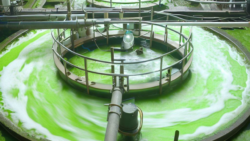
Oxidation In Wastewater Treatment
Oxidation in Wastewater Treatment: A Comprehensive Guide
Introduction
As global water scarcity intensifies and environmental regulations tighten, effective wastewater treatment has become more crucial than ever. One of the most significant processes in this realm is oxidation, which plays a pivotal role in removing organic pollutants, nutrients, and pathogens from wastewater. This article delves into the nuances of oxidation in wastewater treatment, exploring its relevance, methodologies, and the latest technological advancements. Understanding this topic is paramount for wastewater treatment professionals and facility managers as they strive to improve efficiency, comply with regulations, and protect our ecosystems.
1. Understanding Oxidation in Wastewater Treatment
1.1 What is Oxidation?
Oxidation is a chemical process involving the transfer of electrons from one substance to another, resulting in the breakdown of organic materials in wastewater. In wastewater treatment, oxidation can effectively remove harmful substances and pathogens that pose risks to public health and the environment.
1.2 Types of Oxidation Processes
-
Biological Oxidation: This process utilizes microorganisms to convert organic materials into carbon dioxide and water. According to recent industry analysis, around 70% of municipal wastewater treatment plants employ biological oxidation methods such as activated sludge processes and trickling filters.
-
Chemical Oxidation: Here, chemical agents, such as chlorine, ozone, and hydrogen peroxide, are used to oxidize contaminants. Research published in leading environmental engineering journals indicates that advanced oxidation processes (AOPs) are gaining traction due to their ability to effectively treat a wide range of pollutants, including pharmaceuticals and personal care products.
- Thermal Oxidation: This method involves heating wastewater to high temperatures to facilitate oxidation. Though less common, thermal oxidation can be invaluable in treating industrial wastewater with high levels of organic pollutants.
1.3 Importance of Oxidation in Wastewater Treatment
The oxidation process not only reduces the biological oxygen demand (BOD) and chemical oxygen demand (COD) but also eliminates toxins, making water suitable for discharge or reuse. According to the United Nations, about 80% of the world’s wastewater is discharged untreated, contributing to water pollution and disease. Implementing effective oxidation processes could significantly mitigate these issues.
2. Key Applications of Oxidation in Wastewater Treatment
2.1 Nutrient Removal
Excessive nutrients, primarily nitrogen and phosphorus, can lead to eutrophication in water bodies. Oxidative processes, particularly nitrification, are crucial for converting ammonia into nitrate, which can then be further denitrified into nitrogen gas. Studies show that complete nitrogen removal can be achieved with oxidation efficiencies exceeding 90% in well-designed treatment systems.
2.2 Pathogen Reduction
Pathogen removal is a critical aspect of wastewater treatment. Oxidation—especially when using chlorine or ozone—effectively inactivates bacteria, viruses, and protozoa. According to the World Health Organization, chlorine can reduce fecal coliform bacteria by over 99% in wastewater, making it a reliable choice for disinfection.
2.3 Removal of Emerging Contaminants
Emerging contaminants, such as pharmaceuticals and endocrine-disrupting compounds, present significant challenges for traditional wastewater treatment processes. Advanced oxidation processes (AOPs) utilize strong oxidants to degrade these pollutants, with studies demonstrating removal efficiencies of up to 99% for certain compounds.
3. Challenges in Oxidation Processes
3.1 Operational Challenges
Effective oxidation is contingent upon various factors, including temperature, pH, and the presence of inhibitors. Facility managers often face challenges such as insufficient aeration in biological systems or suboptimal chemical dosing in chemical oxidation processes. Continuous monitoring and adjustments based on real-time data can greatly enhance process efficiency.
3.2 Environmental Concerns
While oxidation processes are effective, they can result in the formation of harmful by-products such as chlorinated compounds from chlorine oxidation. Implementing strategies like dechlorination can help minimize these adverse effects while ensuring compliance with waste discharge regulations.
3.3 Economic Implications
The costs of implementing and maintaining advanced oxidation systems can be substantial. According to recent analyses, AOPs can have capital costs ranging from $300,000 to $1 million, depending on the scale and technology used. Facility managers need to perform cost-benefit analyses to determine the most cost-effective methods for their specific contexts.
4. Technological Advancements in Oxidation Processes
4.1 Membrane Bioreactors (MBRs)
MBRs combine conventional biological treatment with membrane filtration, allowing for enhanced oxidation of organic materials. This technology has gained popularity due to its ability to produce high-quality effluent, with studies indicating that they can achieve BOD and COD reductions of over 95%.
4.2 Ozone and UV Treatment
Ozone oxidation is increasingly popular for its rapid reaction rates and high oxidizing potential. Paired with UV treatment, it can effectively inactivate pathogens and degrade organic pollutants, offering a dual benefit. Research has shown that ozone can reduce chemical oxygen demand (COD) levels by up to 60%.
4.3 Smart Monitoring Systems
With the rise of Industry 4.0, smart monitoring systems using IoT devices enable real-time monitoring of oxidation processes. This technology allows for dynamic adjustments to optimize treatment efficiency and reduce operational costs.
Conclusion
Oxidation plays a critical role in wastewater treatment, reflecting both the challenges and opportunities within the sector. This comprehensive guide has explored the various oxidation methods, their applications, and the latest technological advancements shaping the future of wastewater treatment. As professionals navigate the complexities of wastewater management, a nuanced understanding of oxidation and its implications will prove vital in ensuring compliance, improving efficiency, and safeguarding public health and the environment.
By staying informed and embracing innovative solutions, wastewater treatment professionals can effectively address the pressing issues of water quality and sustainability. As regulations continue to evolve, the integration of advanced oxidation processes could pave the way for a cleaner, safer future, ultimately benefiting both society and our ecosystems.
This detailed overview of oxidation in wastewater treatment aims to serve as a key reference for facility managers and wastewater treatment professionals, ensuring that they are equipped with the knowledge needed to make informed decisions and implement effective solutions in their treatment processes.

